
Eight pieces of classical music inspired by the natural world
The industrial revolution began just 260 years ago – a period that accounts for just a 700th of the duration of human existence. Prior to this relatively recent transition “from an agrarian and handicraft economy to one dominated by industry and machine manufacturing”, we lived in much closer proximity with nature (in part because that transition had yet to decimate nature – a field in which the UK has “led the world”). One of the ways in which this closer relationship to nature can be seen is through music dating from before widespread industrialization. Many pieces of classical music have drawn upon or sought to emulate sounds from the natural world, while in the modern world technological advances have allowed recordings to be utilized directly.
Benefits of exposure to natural sounds – like those in earth.fm’s archives! – are increasingly being understood and endorsed by scientific research. Positive effects include the reduction of feelings of stress and anxiety, and of aggression and violence, leading to increased sociability. Other benefits include improved memory, concentration, efficiency, and “nervous system function”.

While it may be no substitute for the real thing, music drawing on the natural world – from water and icy landscapes, to storms and wind, birdsong, and even arthropods like bees and spiders – provides a prism through which we can marvel at the sonic landscapes around us.
Sound and rhythm, two of the basic building blocks of music, are also present in the natural world (think, for example, of the rhythms of rainfall, rolling waves, or even of the transition of day to night); it is inevitable that these natural soundscapes have influenced musical composition. (It has even been theorized that human music-making had its origins in birdsong.)
Below, we’ll explore a (far from exhaustive!) selection of classical pieces which were influenced by the natural world – both well-known and less familiar compositions, which date from a few decades before the industrial revolution to the mid 20th century.
We hope that the beauty of these compositions will open up a conversation about our interbeing with the natural world, whose magnificence inspired them.
Antonio Vivaldi’s The Four Seasons (c. 1718−1720)
Despite writing more than 500 concertos and choral works, Vivaldi, Venetian composer and virtuoso violinist, was largely forgotten after his pauper’s death. It is only since 1926 that he has been reappraised, when a cache of manuscripts (including these now-indelible violin concertos) came to light.
Taking such fundamental parts of the natural cycle as their subject speaks to their engagement with the natural world. Where ‘Spring’ opens with “a bright and beautiful cacophony of bird song” and “scalic passages evok[ing] their flits and flutters”, ‘Summer’ crescendos with a storm represented by “rushing string scales and pounding cellos and basses”.
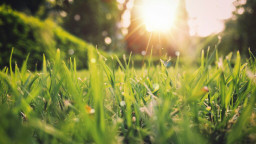
Further listening:
In 2009, contemporary US composer/pianist Philip Glass premiered a direct companion piece: The American Four Seasons, a concerto for solo violin, strings, and synthesizer. Whereas the earlier Four Seasons attempted to consciously represent flowing creeks, buzzing flies, and frozen landscapes, Glass takes a less programmatic approach to the same subject matter.
Jean-Philippe Rameau’s Nouvelles suites de pièces de clavecin: ‘La poule’ (c. 1726–1727)
In this “glorious and powerful portrait of quite an unassuming creature”, Rameau, one of the pre-eminent French Baroque composers for harpsichord (whose works of musical theory were fundamental to the development of Western music), drolly evokes the humble hen.
Musician Albano Berberi describes the harpsichord’s “staccato melodies and abrupt, stop-and-go phrasing” as an ideal evocation of “a chicken pecking and fluttering its way jerkily through a farmyard”, while contemporary harpsichordist Mahan Esfahani suggests that this “bon-bon for the piano” contains, in its “repeated quavers and fiendish semiquavers”, an element of jeopardy: “perhaps our barnyard friend is being tracked by a hawk or some other kind of predator?”
Further listening:
With his 1928 suite The Birds, Italian composer, violinist, and musicologist Ottorino Respighi attempted to transform the songs and movements of various birds into music, in sections devoted to doves, hens (based on Rameau’s piece), nightingales, and cuckoos.
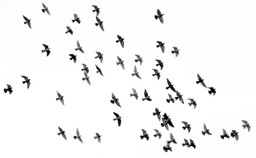
Ludwig van Beethoven’s Symphony No. 6, the Pastoral Symphony (1808)
This programmatic symphony reflects the pleasure which the revered German composer/pianist took in nature, by representing the experience of being in the countryside. “In a striking woodwind cadenza”, its second movement, ‘Scene by the Brook’, includes a precise transcription of the calls of a nightingale, a quail, and a cuckoo, played on the flute, oboe, and two clarinets, respectively.
In ‘Thunder, Storm’, “happily dancing peasantry […] are sent scurrying for cover by a thunderstorm” which develops from approaching thunder played as “quiet tremolos on cellos and basses” and initial drops of rain (eighth-note passages played on violins), to a great climax of timpani thunder, piccolo lightning, and high winds and heavy rain depicted via arpeggio-like passages and 16-note tremolo passages on the strings. As the storm passes, a rainbow is evoked by an ascending passage on a solo flute.
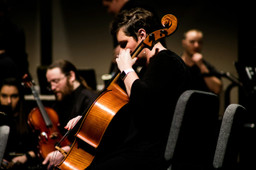
Claude Debussy’s La mer (1905)
Made up of three symphonic sketches, this orchestral composition immerses the listener in an invocation of “the play of light on water, and a vivid sense of motion”, which, like the sea itself, can transition “from serene tranquility to terrifying, awe-inspiring power”. Appropriately enough, Debussy considered becoming a sailor, and, throughout his life, maintained an attachment to what he called “my old friend, the sea; it is always endless and beautiful. It is really the thing in nature which best puts you in your place.” Though otherwise written away from water, the piece was completed in Eastbourne, England, where Debussy described “the sea unfurl[ing] itself with an utterly British correctness”.
Further listening:
The “stormy passages” of The Hebrides (or Fingal’s Cave; 1833) – a standalone overture by the German Romantic composer and musician Felix Mendelssohn, considered an early tone poem – was inspired by a trip to the Scottish island of Staffa, where the basalt sea cave after which the piece is popularly known is located.
Richard Strauss’ An Alpine Symphony (1915)
Strauss, a German composer-conductor renowned for his operas and tone poems, started to compose when he was just six years old, and continued to do so for almost another 80 years. An Alpine Symphony, which “describe[s] the experience of climbing and then descending a mountain, in a continuous dawn-to-dusk sequence” may have been influenced by a similar expedition he took part in at the age of 15. This piece for large orchestra wasn’t written for another 50 years, yet includes a vivid storm sequence similar to one he experienced on that occasion, during which “trees were being uprooted and rocks thrown into their face[s]”.
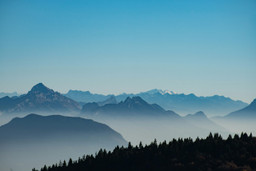
However, this did not dampen his enthusiasm for mountains; in his forties, Strauss built a house in a town in the Alps, while the love of nature which made him a follower of Friedrich Nietzsche’s philosophies, brings the natural world to life in “this monumental work”, from its subtleties to its most uncompromising powers.
Béla Bartók’s Mikrokosmos: ‘From the Diary of a Fly’ (1940)
Mikrokosmos – a series of 153 pieces for piano by the Hungarian composer/ethnomusicologist, who synthesized Eastern European folk music, classicism, and modernism – becomes progressively more complex as it proceeds. That ‘From the Diary of a Fly’ numbers 142nd gives some sense of the technical advancement used to evoke a subject as humble as a fly caught in a spider’s web. While playing, “the two hands are totally independent of one another”, with the left embodying the spider’s attacks and the right, the fly’s frantic attempts to free itself.
Further listening:
For more insect-inspired pieces, see also Russian composer Nikolai Rimsky-Korsakov’s evergreen ‘Flight of the Bumblebee’ (1908) – “as onomatopaeic [sic] a musical ditty as it’s possible to write” – and Polish composer/virtuoso pianist Frédéric Chopin’s more wistful Étude Op. 25, No. 2, in F minor (‘The Bees’).
Olivier Messiaen’s Le merle noir (1952)
Messiaen – a French composer, organist, and ornithologist – was interested in merging his interests by making music inspired by birdsong, in which he found “direct access to the divine”. As a result, he “became an expert at notating birdsong”, with their calls being incorporated into works such as this, which is named for the common or Eurasian blackbird (Turdus merula). Written for flute and piano, this chamber piece is as “unpredictable as the flitting, untamed bird itself”.
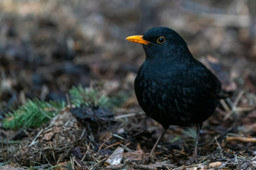
Ralph Vaughan Williams’ Sinfonia antartica (1953)
Expanding upon a score he had originally composed for Ealing Studios’ Scott of the Antarctic, a 1948 dramatization of the fatal Terra Nova Expedition, this prolific English composer made unconventional choices of instrument, such as vibraphone and xylophone, to invoke “the peril and beauty of the Antarctic landscape”.
“The music creeps forward as if cautiously feeling for crevices, lumbering and encumbered”, while organ chords signify the discovery of a crack in the ice, and a solo soprano combines with a wind machine “to express the whipped-up unbearable whistles of the impossible conditions”.
Further listening:
The tense Symphony No. 8 (or Antarctic Symphony), written by “committed environmentalist” and fellow English composer Peter Maxwell Davies to celebrate the 50th anniversary of Williams’ piece. Based in part on a three-week stay in Antarctica, “the extraordinary sounds produced by the ice prompted equally extraordinary percussion improvisations”: instrumentation for Davies’ symphony includes “tam-tam (with plastic soap-dish), tuned brandy glasses (with water), 2 small pebbles, […] biscuit tin (filled with broken glass), [and] 3 lengths of metal builder’s scaffolding ([…] to be hit by a mallet)”.
Featured photo by Josep Molina Secall on Unsplash
Earth.fm is a completely free streaming service of 1000+ nature sounds from around the world, offering natural soundscapes and guided meditations for people who wish to listen to nature, relax, and become more connected. Launched in 2022, Earth.fm is a non-profit and a 1% for the Planet Environmental Partner.
Check out our recordings of nature ambience from sound recordists and artists spanning the globe, our thematic playlists of immersive soundscapes and our Wind Is the Original Radio podcast.
You can join the Earth.fm family by signing up for our newsletter of weekly inspiration for your precious ears, or become a member to enjoy the extra Earth.fm features and goodies and support us on our mission.
Subscription fees contribute to growing our library of authentic nature sounds, research into topics like noise pollution and the connection between nature and mental wellbeing, as well as funding grants that support emerging nature sound recordists from underprivileged communities.

